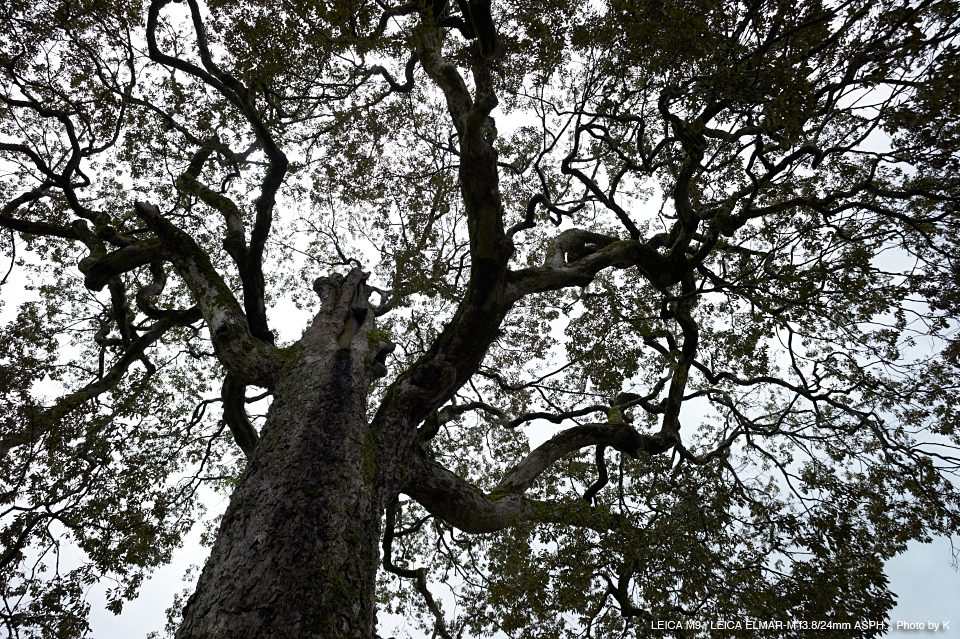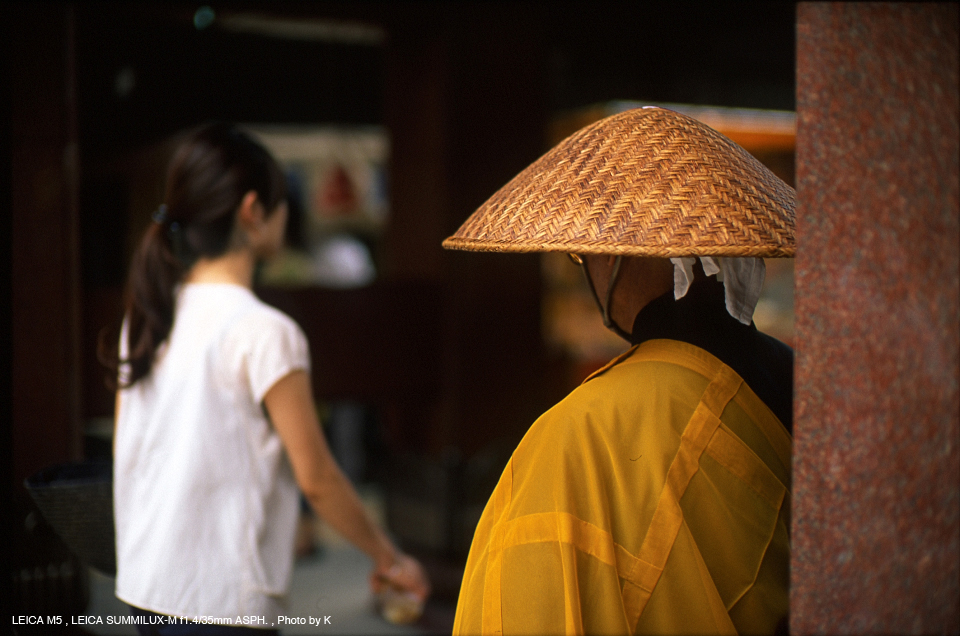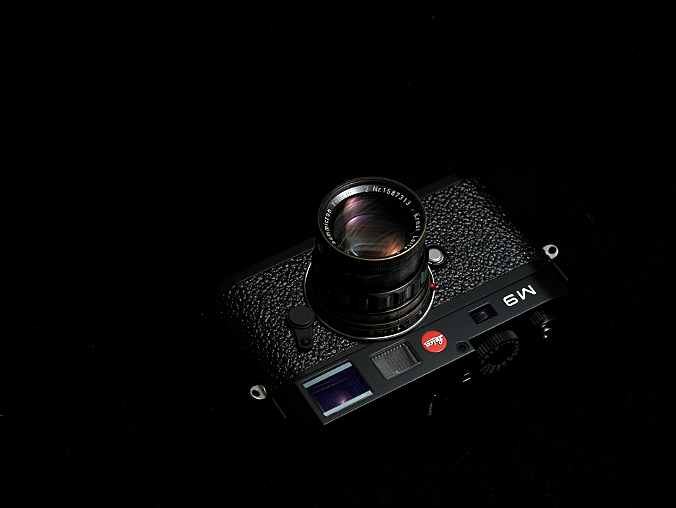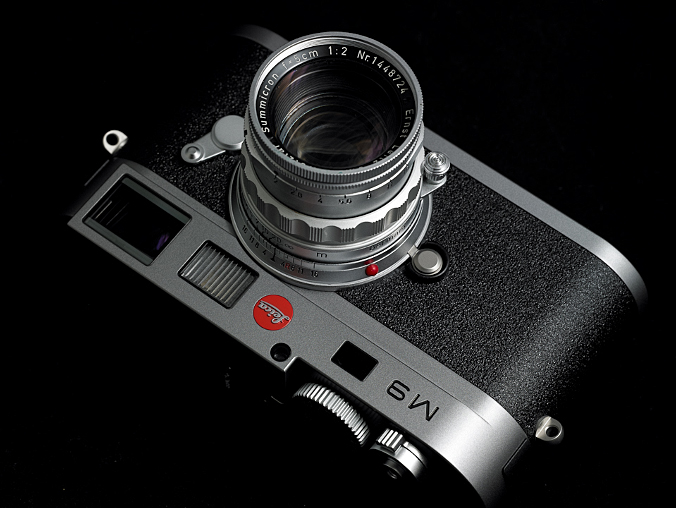

It's certainly expensive. Some people get it for decoration only. Other people mockingly call it just a brand item. Here, I don't mean to praise the heavy users who are using it for a long time until the camera has full of scratches and dents.
... I think many people misunderstand the value of Leica cameras.
Let's talk about the basic property. First, it has a full-size image sensor in such a small body and this trait already makes this camera peerless. Technically it's virtually impossible to load this large sensor because of the extremely short flange back distance of a rangefinder. Plus, the sensor is lowpass-less. For this camera, it's best not to have the lowpass filter as long as moiré and false color can be reduced to the level that is practically usable, because of the markedly improved sharpness without the lowpass filter. And there're a countless number of old and new lenses. No other system provides this overwhelming line-up of the most modern single focal lenses designed with advanced technology. In terms of mechanism, it's natural that they produce many single focal lenses, though.
Of course, this camera isn't an almighty camera. It's difficult to take close up shots because of the mechanism. Using ultra telephoto lenses is also hopeless. It's also impossible to check the bokeh in the viewfinder and there's always an issue of parallax. However, the system is so compact and handy that you carry it with you more often. Without a camera, you can't shoot. With a Leica, you can capture the decisive moment by framing instantly and panfocusing. In such a situation, it's safe to say that no other camera can generate better picture quality than the M9. Convenient functions increases camera size and sometimes force a photographer to do bothersome operations. In other words, with conventional modern digital cameras, it's hard to shoot in a way that one do with the M9.
Now, is it really expensive? It's a matter of choice between prioritizing the almightiness before picture quality and paying for the staggering picture quality produced in a limited situation. It may not be expensive because the price is almost the same as flagship DSLR cameras by major brands.


The top feature of the LEICA M9 is the lowpass-less filter. Because of the sensor structure, output images can't be free from false colors and moiré. Simply put, lowpass filters are used to defocus the original image in order to reduce false colors and moiré. Of course, it's a double-edged sword and there's a disadvantage. Professional photographers often say, "This camera can't focus anywhere." What they mean is that the images aren't sharp enough so they cannot find the peak of focus (that was something they could always do on films). You may say that we can sharpen the image inside or outside of the camera, but it doesn't produce good results. You only get jaggy and unnatural images drawn by thick lines because you are sharpening the unsharpened original images.
If possible, it's best to go without the lowpass filter because the images are much sharper. A picture is a two-dimensional reproduction of a reality which includes distance and air. In order to convert the reality on a two-dimensional media, we need to use bokeh. People feel reality in the two-dimensional image by the contrast between the sharp focused area and bokeh. In short, we feel reality if the image is sharp and crisp. This is something lowpass-less sensors are good at.

This is a 100% crop of the image above. I shot RAW and developed by the Capture One Pro 6 without any adjustments. Of course, no sharpening, either. This sharpness is the top feature of the M9.


Because of the extremely short flange back distance, Leica has been thoroughly updating the M lenses for digital use. It must have been difficult to design the lenses because they are used in severe conditions. Also, since they are RF lenses, they are all single focal. Although there are excellent zoom lenses these days, single focal lenses still have their advantages for better performance. Because of these, Leica has the largest line up of high performance lenses among all brands.
These high performance lenses are mounted on the body with a full-size lowpass-less sensor, and this system is the shortest cut to get the best picture quality among all digital system for consumers. As of now, other than the Leica M, only Sigma's SD series and medium format digital backs are lowpass-less. Sigma lines up more zoom lenses than single focal lenses, and the medium format digital backs are unrealistically priced for personal use. Now who says the Leica M system has disadvantages?


In today's digital age, camera's picture quality is very important, but the quality depends on lenses. No brand surpasses Leica in the number of lens choices. In addition to the modern Leica lenses, there're modern lenses from third parties and there're old lenses by Leica and other brands. They are just uncountable. Some lenses are ultimately excellent, while some other lenses are just useless (but Leica shooters know they are not bad lenses). So, this system will never bore you.
Once you start playing with lenses, there's no end. In the first stage, you simply enjoy the lens characters regardless of what is photographed. But in this stage, you just enjoy the feel, but not understand the minute differences. So, you'll have a fun to look for the scenes where you can take advantage of the lens characters. Once you clear this stage, you will begin to understand the minute differences among the lenses.
In this next stage, you will reach a state where you feel any lens is good. Once you recognize a weak point of a lens, you will be able to cover it by your skill. Even if the lens has a strong point, it won't even be demonstrated if you don't know how to utilize it. Then you will become more practical and choose a lens with a neutral character. In other words, in return for your squandering, you'll get a skill to take a certain level of photos regardless of lenses you use. Then sometimes, you peak the abyss of the lens swamp and sink into there again. Many users will walk such way and oddly enough, some of them become photographers who take tasty photos. Because there're many unique and attractive lenses, you will get them, search for the scene, and shoot: they are purely photographic activities. This is a costly way of living a life and sometimes I want to take my money back.。

Unlike the Leica M cameras for films, there's only one choice for viewfinder magnification (approx. 0.68X), so the best focal length would be around 35mm. Speaking of the lens choice, if you don't get a sense of angle of view even though you want to start using a single focal lens, I recommend using a rangefinder. While looking into the viewfinder, you operate the frame pre-selector lever (the silver level on the left picture) and you can check the area covered by each focal length. This way you can instinctively know which focal length is the best without changing lenses.
Some of my recommendations are the Hektor 2.8cm and the Summaron 3.5cm. The old Elmar 5cm is also nice. These darker lenses take great pictures if they are well maintained. Unfortunately, we don't sell them on this website, but you may find it on the street.


Leica users has a habit of shooting wide open for no reasons, so the slower top shutter speed doesn't matter at all and you can pull to ISO80. If you're using the dreadnought f1 lens, just get a ND filter.


The Leica M8/M8.2 has the color shift probably because of the IR cut filter (this is also interesting, though), but the color reproduction by M9 is very neutral. I could say that the M8/M8.2 is like a color negative film, while the M9 is like a slide film. In terms of exposure, I can still stick to the same similes. While overexposing with the M8/8.2 is fun, I want to underexpose with the M9. They are so different and I just can't believe that they were made by the same brand. I guess the M9 is easier to use in general, but try the M8/8.2 if you have a chance just like choosing a different film.
Higher ISO performance has also been improved considerably. The image above was shot RAW at ISO400. The Capture One Pro 6 activates the noise reduction by default, so I turned it off. Of course, there's no problem at ISO400, but you can use it at ISO800 or higher. With the M8/8.2, it was already very noisy at ISO640, so I gather they took some countermeasures for the M9. In addition, now you can pull to ISO80. Dynamic range may become narrower, but this must be a compensation for the slower 1/4000 top shutter speed. Actually, this is very helpful when shooting wide open.


LEICA M9
KAF -18500 18 MP CCD Sensor
5212 x 3472 (18 MP), 3840 x 2592 (10 MP)
SD / SDHC Memory Cards
-3 EV to +3 EV, 1/3 f-stops
ISO 160 – ISO 2500, Pull 80 available, Auto ISO
0.68 x
1/4000s – 240s (in Bulb), 1/180s flash synchronization